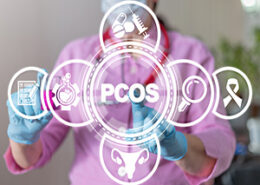What is azoospermia?
Azoospermia is one of the sperm problems in men that causes infertility. Azoospermia is a condition in which the number of sperm in a man’s semen is zero. This problem in male fertility can occur for two reasons: obstruction (blockage of sperm entry into semen) or non-obstruction (insufficient sperm production). Men with this problem usually have no specific symptoms in semen or libido, and the only problem is infertility. In the past, the only treatment for azoospermia was reconstructive surgery to remove blockages or receive donated sperm. But today, with the advent of new surgical methods to extract sperm from testicular tissue and tubes, such as TESA, PESA, micro-TESA, etc., many men with azoospermia can use their sperm to have children.

What are the causes of azoospermia?
Azoospermia is a fertility disorder in men in which the number of sperm in a man’s semen is zero, in other words, there is no sperm in the semen. About 1% of all men and about 15% of men with infertility have this kind of disorder. This problem in male infertility may occur for two reasons: lack of sperm production in the testicles (non-obstructive) or blockage of sperm transfer to semen (obstructive). In general, there are three types of azoospermia:
Pretesticular azoospermia:
The production of sperm in the testicles is controlled by certain hormones secreted by the pituitary and hypothalamus such as FSH and LH. If the secretion of these hormones is disrupted for any reason, the person will have a decrease in sperm count and even no sperm. Pre-testicular azoospermia is non-obstructive and accounts for only 2% of cases of azoospermia.
Testicular azoospermia:
Testicular azoospermia is the most common type of non-obstructive. In this type, the testicles are usually abnormal or small, or the process of sperm production is disrupted due to damage to the testicles. Testicular azoospermia can occur for the following reasons:
- Infectious diseases such as epididymitis and urethritis cause inflammation of the seminal vesicles or inflammation of the urinary tract.
- Some childhood illnesses, such as mumps or viral orchitis, cause swelling in one or both testicles.
- Severe trauma and injury to the testicles.
- The existence of genetic problems such as Klein-Filter syndrome.
- Cancer and chemotherapy, radiation and radiotherapy.
Post-testicular azoospermia:
Post-testicular Azoospermia is an obstructive type of azoospermia. In this type, the testicles produce sperm, but the sperm does not enter the semen due to obstruction in the urethra. About 40% of cases of azoospermia are of the testicular dimension. Post-testicular type can occur for the following reasons:
- Congenital obstruction of sperm tubes
- Perform some surgeries such as vasectomy
- Reversible ejaculation (during orgasm, semen enters the bladder instead of entering the penis).
How is azoospermia diagnosed?

The first step in diagnosing azoospermia is a spermogram. In a spermogram test, a semen sample is examined in the laboratory by powerful microscopes. If there is no sperm in the sample, the test should be repeated several days later. If sperm are not present in both semen samples, the semen is centrifuged in the laboratory and the sediment from the centrifuge is examined. If there is no sperm in the semen, azoospermia is diagnosed.
In the next step, the cause of this male fertility problem should be investigated. At this stage, a specialist doctor will order a blood test to check hormone levels. If the level of hormones that affect sperm production is normal, an ultrasound or MRI is requested to check for possible obstructions in the sperm outflow tract. In addition, genetic tests are performed to check for genetic problems. Finally, a specialist doctor will diagnose the cause of this problem by examining the test results and performing an examination.
How is azoospermia treated?
Azoospermia is one of the sperm problems in men that causes infertility. This problem in male fertility cannot be cured only by following the ways to increase sperm quality and improve lifestyle. Therefore, patients without sperm need medical intervention to have children and in most cases need to use infertility treatment-assisted reproductive techniques. The following methods are used to treat azoospermia, depending on the patient’s condition and the type of the problem:
Treatment of azoospermia with obstructive causes
- Opening the ejaculatory duct: Sperm passes through the epididymis (twisted tubes), seminal vesicles, and ejaculatory duct to reach the semen, respectively. If the obstruction is in the ejaculatory duct, the ejaculatory duct can be opened with a relatively simple surgery.
- Transplantation of the seminal vesicle into the epididymis: Due to the small diameter of the seminiferous tubule and the epididymis, this transplantation is a very complex operation. Therefore, its success rate is low. After transplantation in about 25% of cases, sperm appear in the semen, but due to the low quality of sperm, the chance of fertility in these people is only 10%.
- Sampling: Sampling for sperm extraction is an effective method for treating infertility in men with obstructive azoospermia. The sperm obtained in this way are fertilized in the laboratory by IVF or ICSI with an egg and the embryo is formed. In some cases, the collected sperm is frozen and stored for future use. Types of sampling methods are:

PESA: In men whose azoospermia is due to a lack of bilateral seminal vesicles, a method called PESA is used. In this procedure, the surgeon pulls a sperm sample from the epididymis into a syringe through a special syringe without making an incision. To check for sperm, the sample is sent to a lab.
MESA: If the azoospermia is due to an obstruction in the epididymis, a method called MESA is used. In this procedure, the surgeon opens the scrotum and microscopically determines the site of the epididymis obstruction. Once the obstruction is identified, the surgeon uses a special syringe to remove the sperm sample from behind the obstruction site and examines and confirms the presence of sperm under a microscope.
TESA: Sometimes in patients with obstructive azoospermia, sperm cannot be obtained from the epididymis. Therefore, the sperm sample must be taken directly from the testicle. In this case, a method called TESA is used. In this method, a sperm sample is taken from the testicle through the skin and sent to a laboratory with special needles.
Micro-TESE: This surgery is one of the most widely used methods to treat infertility in men with obstructive azoospermia. In this procedure, the surgeon makes a small incision in the testicle and takes a sample of testicular tissue in which sperm are more likely to be present. The sample is examined under a microscope to ensure the presence of healthy sperm.
Learn more about testicular sampling: Testicular sampling for male infertility treatment
Treatment of azoospermia with non-obstructive causes
- Hormone therapy: Hormone therapy is used to treat patients with pre-testicular azoospermia who have low levels of FSH and LH. In this method, a specialist doctor prescribes drugs containing these hormones to help produce sperm in the testicles.
- Timely treatment of bilateral undescended testicles: Bilateral undescended testicles or bilateral cryptorchidism causes azoospermia and infertility in men. This problem can be solved if diagnosed in time and surgery is performed. In some cases, using some drugs can help produce sperm in this type of testicle.
- Sampling: Sometimes azoospermia may occur due to the loss of sperm while passing through the sperm tubes. In this case, healthy sperm can be extracted using testicular sampling methods. These sperms can be used for in vitro fertilization such as IVF and ICSI.
- Receiving donated sperm: If severe testicular damage and testicular function are irreversible in testicular azoospermia, the only way to conceive is to use donated sperm.

Final conclusion azoospermia treatment
Nowadays, with the advancement of infertility treatment methods, many couples with azoospermia have hope for fertility. Infertility in pre-testicular and post-testicular types can be treated with medication and various surgical and biopsy methods, and these people can have children naturally or with the help of assisted reproductive methods such as IVF, ICSI, etc. However, people with testicular azoospermia cannot conceive due to the lack of sperm production in the testicles. These people need to use donated sperm to have children.
Contact us for more information about the treatment of azoospermia in Iran.










